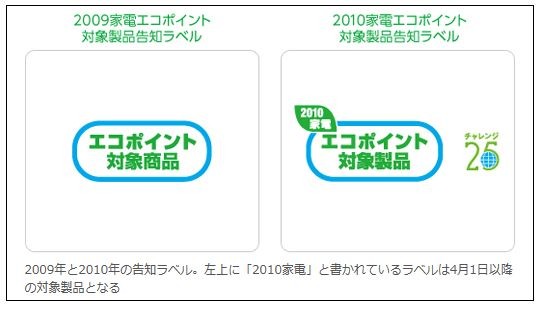Eco-point incentive program In Japan
So as to encourage individuals to promote sustainable practices and environmentally conscious actions, an eco-point program implemented in Japan granted points to citizens taking environment-friendly actions. The campaign boosted the replacement demand in electronics stores, as consumers flock to accumulate Eco-points on purchases of eco-friendly home appliances.

The challenge
Greenhouse gas emission from residential sector is difficult to control since emission regulation cannot be implemented to individual household. The government should work at raising consumer awareness in households, promoting energy saving lifestyle and sustainable living in order to abate increasing CO2 emissions. In 2008, a total of 1,216 (1,207 in Year 2012) billion tonnes of CO2 was emitted in Japan. To prevent the deterioration of the situation, some environmental policy initiatives were activated in order not to further hit the record high figures.
The measure
The objectives of the Eco-point program supporting private demand were to encourage a more sustainable consumption, economic rejuvenation, and the spread of energy efficient domestic devices. The program was launched in May 2009 by the Ministry of Environment, the Ministry of Economy, Trade and Industry, and the Ministry of Internal Affairs and Communications. The Eco-point system proceeds under a public funding of 290 billion yen between May 2009 and March 2010 to be eligible with each Eco Point worth roughly one yen. Labelling about 2,000 types of products as eligible for the programme sprawled the electronics stores nationwide.
The selection of eligible products was based on government criteria used to score the products’ energy efficiency. The score was based on a one to five stars scale: Eco-points could only be gained by purchasing products with four or more stars.
Initially, Eco Points were only eligible for three kinds of products: air conditioners, refrigerators and TVs, since half of total carbon dioxide emissions from households are mainly produced by these products. The points could be exchanged for three types of goods: coupons and prepaid cards, energy-efficient products, or products that promote regional economies. More points could be gained for a small fee by handing over old products for upcycling to a new appliance.
In response to the popularity of this policy, the campaign was extended until March 2011 under a supplemental budget.
Lessons learnt
By April 2011, individuals had utterly submitted 44 million eco-point applications to the government, which were worth 621 billion yen (7.7 billion dollars) in redeemable eco-points. Although this policy might encourage unnecessary purchase, on the whole, it educated the citizens about energy efficient domestic appliances. The statistics in June 2011 indicated that the ratio of green home appliances with four or more stars on the unified eco-label to the total shipped quantity had shown a large increase. Most importantly the Japanese government estimated a reduction of CO2 emissions by about 2,700,000t-CO2/year due to this programme. Since it was proven that citizens had stopped buying less efficient appliances, Japan was able to abandon this successful support action.
Further deployment
Other than the promotion of global warming countermeasure, this policy also stimulated the economy in Japan, creating employment for about 320, 000 persons a year. Seeing that such regulation and standards were successfully implemented in Japan, S. Korea and Taiwan followed with similar policies, as for instance the “green credit card” system in S. Korea. The maturity of this policy measure is estimated to be 9 on the GML scale, for its concept has been already deployed abroad.
Left: the label used in 2009; Right: the label used in 2010
A scale of one to five stars represented the products' efficiency, and provided the information of the estimated annual cost of running the device.
Links
Eco PointEco Action PointEffects of the Home Appliance Eco-Point System Policy